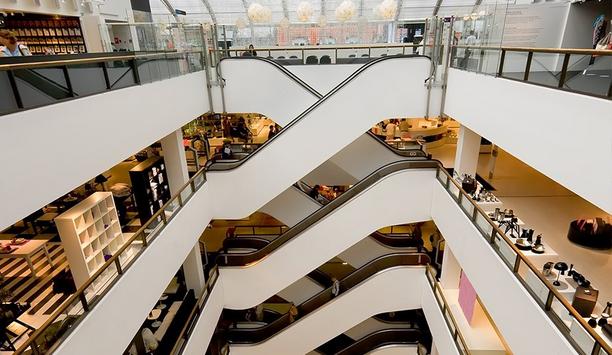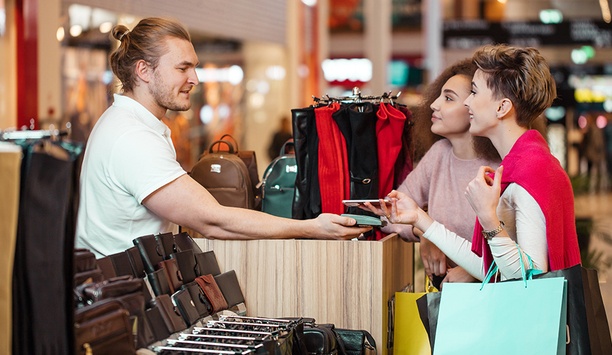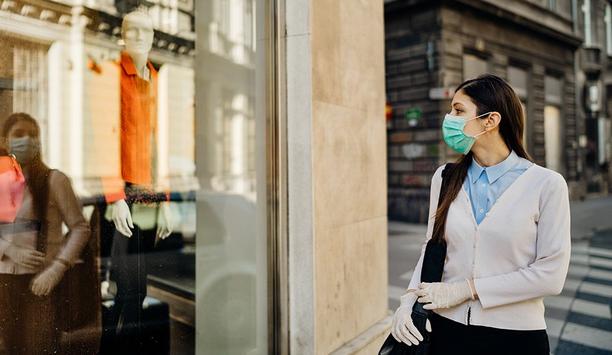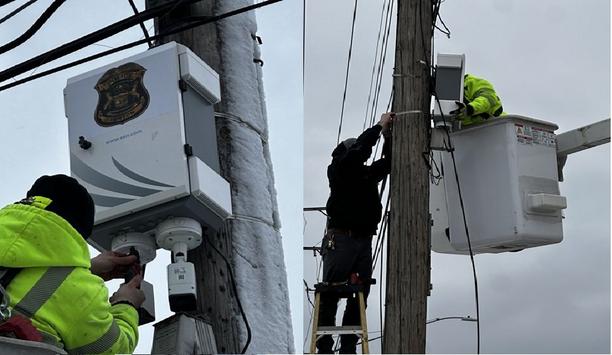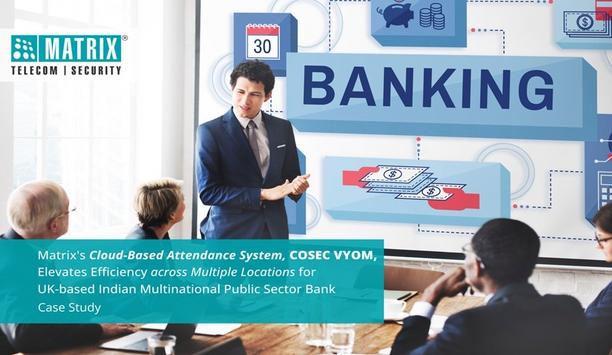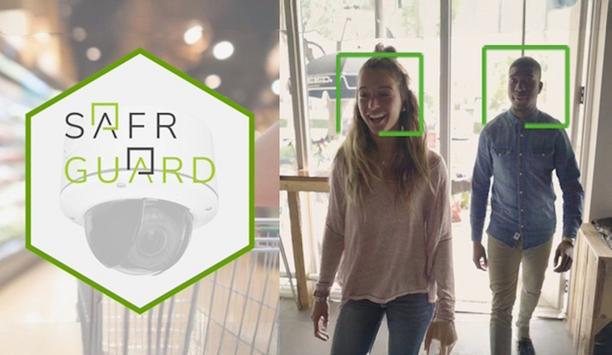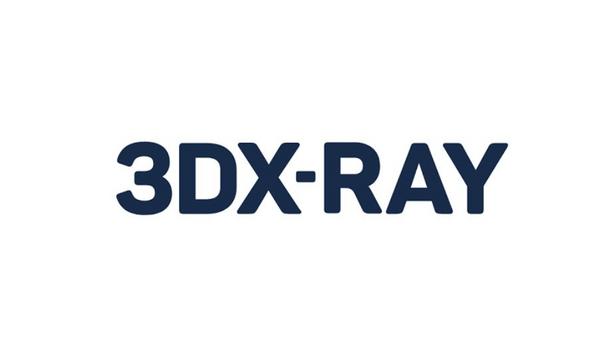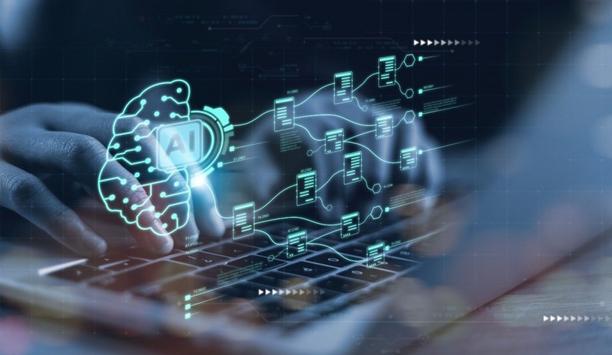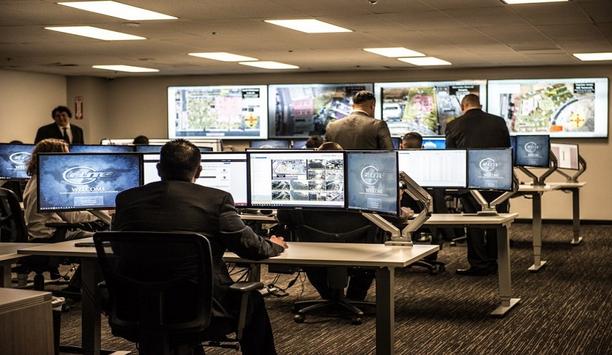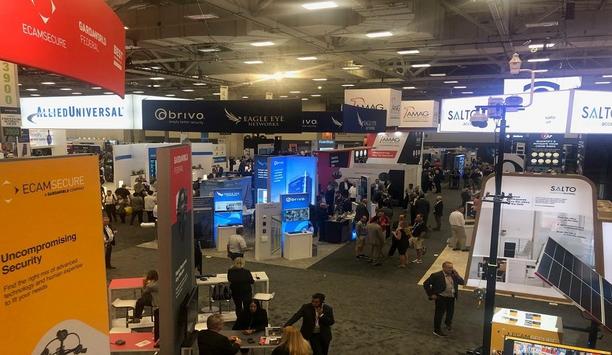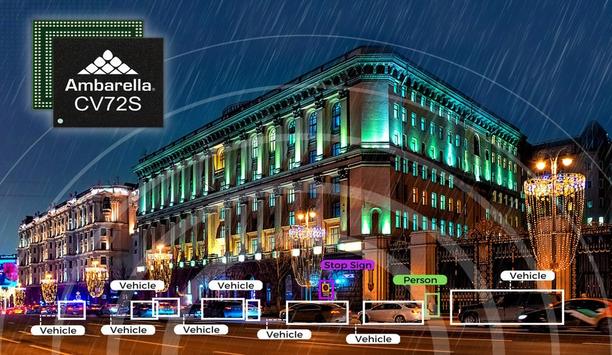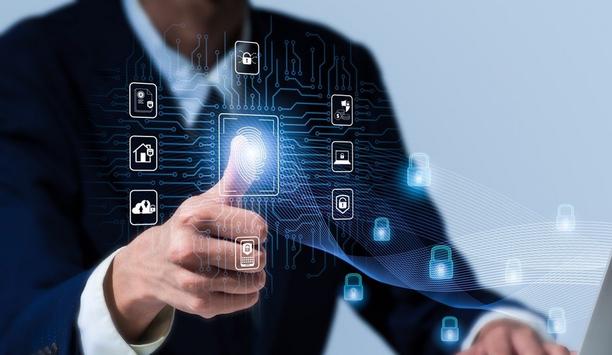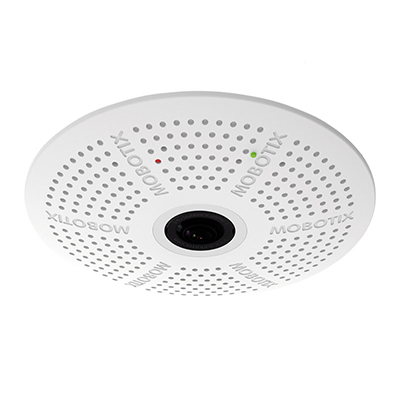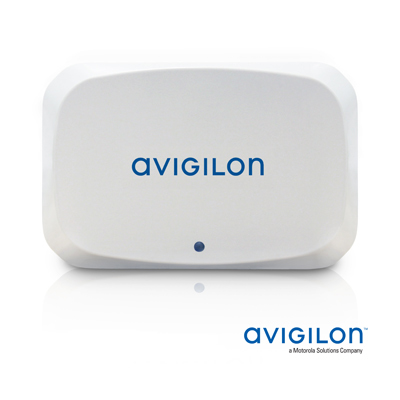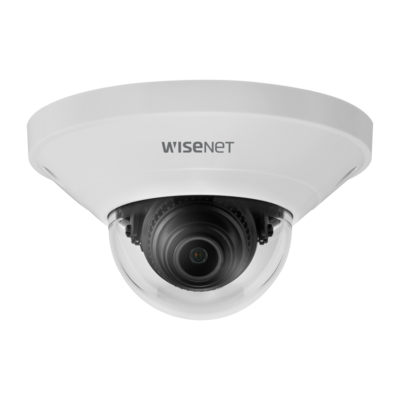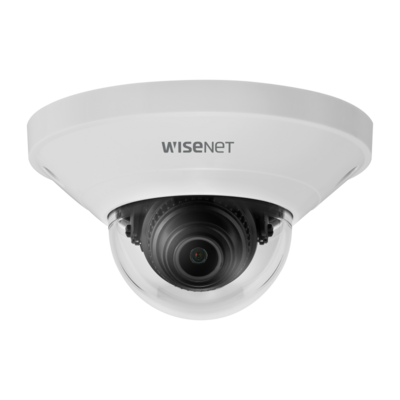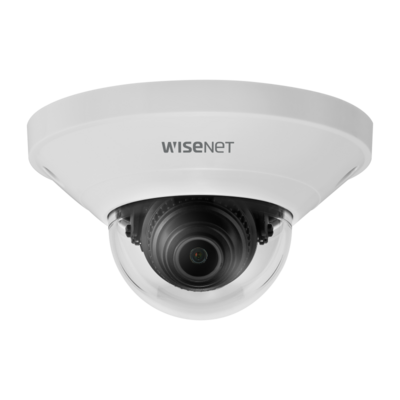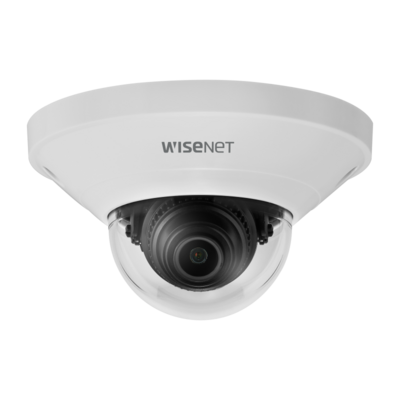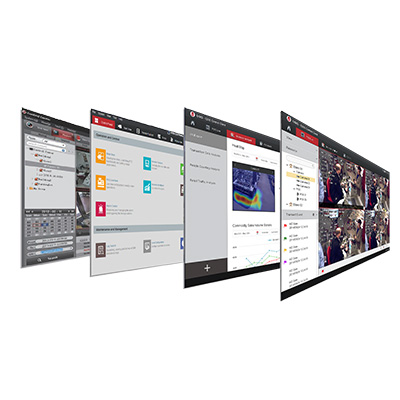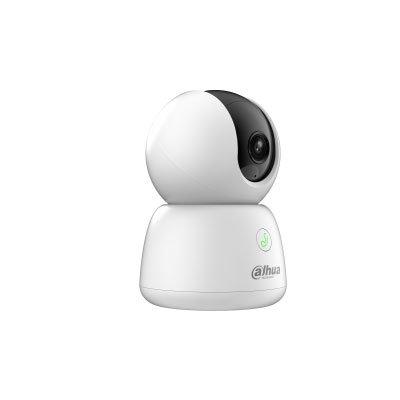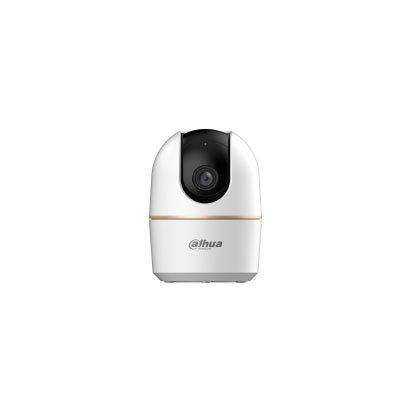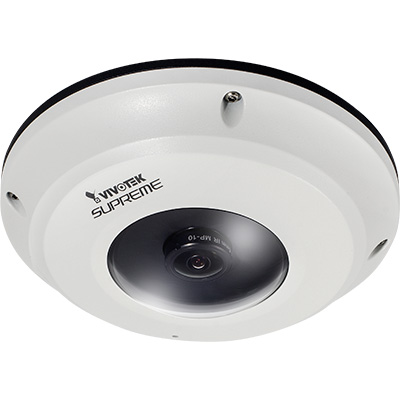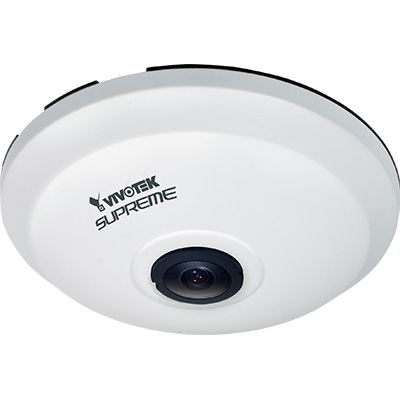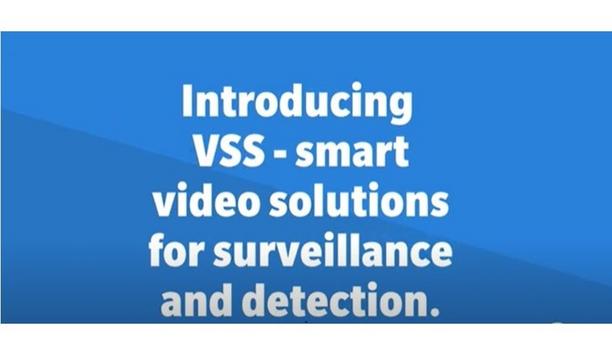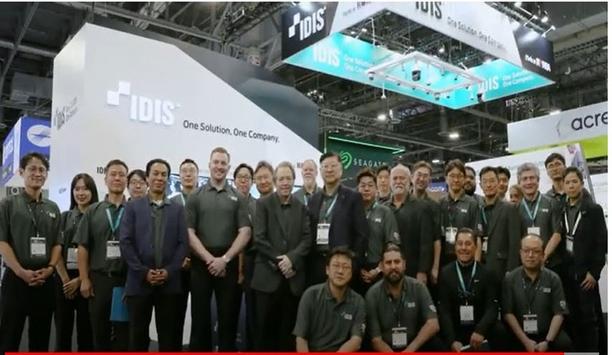Retail security
White papers

Why SAAS Security Platform is more popular in American SMEs
Download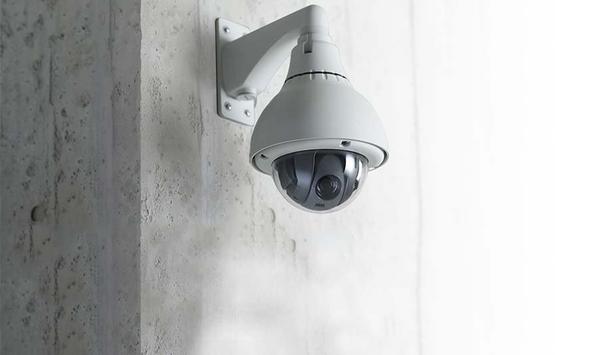
Security investments retailers should consider for their 2021 budget
Download
How end-to-end video security solutions can help your organisation with social distancing
Download
What are the security technology needs of the hotel sector?
Download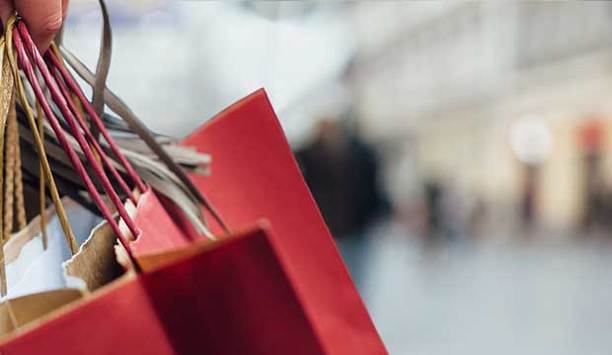
Loss prevention and beyond: How video innovation enriches retailers
Download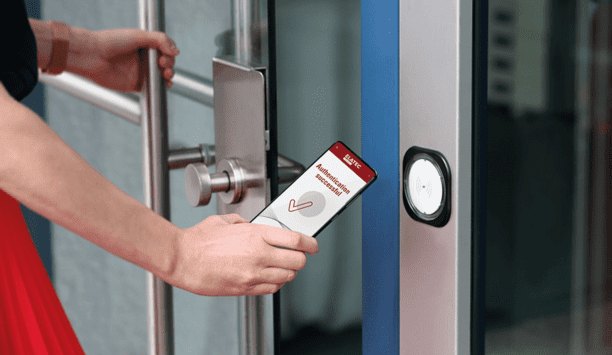
Physical access control
Download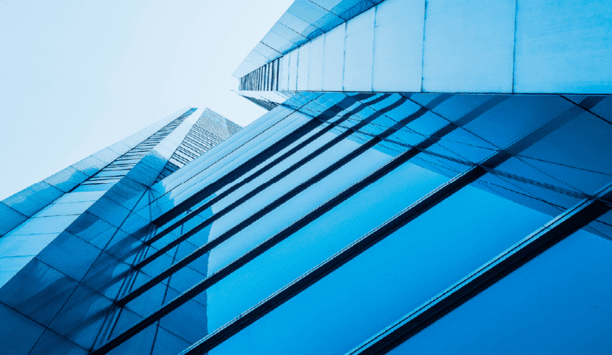
Precision and intelligence: LiDAR's role in modern security ecosystems
Download
Verkada workplace safety survey
Download
How video technology is transforming loss prevention, operations, and customer experience in the retail sector
Download
How intelligent video is transforming banking and financial institutions
Download
Why SAAS Security Platform is more popular in American SMEs
Download
Security investments retailers should consider for their 2021 budget
Download
How end-to-end video security solutions can help your organisation with social distancing
Download
What are the security technology needs of the hotel sector?
Download
Loss prevention and beyond: How video innovation enriches retailers
Download
Physical access control
Download
Precision and intelligence: LiDAR's role in modern security ecosystems
Download
Verkada workplace safety survey
Download
How video technology is transforming loss prevention, operations, and customer experience in the retail sector
Download
How intelligent video is transforming banking and financial institutions
Download

Case studies
To combat persistent retail crime and deliver peace of mind to workers in the bustling North Leroy Street business district, the City of Fenton Police Department has deployed a new AI-powered video surveillance system with camera-sharing technology to accelerate response time during retail heists or other emergencies. Deter, detect, and apprehend criminals Fenton is a small city with 12,000 permanent residents, but Chief of Police Jeffery Cross estimates that 60,000 people pass through the town daily. Located off Highway US-23, it is a popular shopping and restaurant district for commuters and people from neighbouring cities. Unfortunately, retail criminals also frequent the area. The new video surveillance system is designed to deter, detect, and apprehend retail criminals. Live security camera footage Through a partnership with RapidSOS, this technology gives Fenton’s 911 dispatch professionals immediate access The new system, housed in a rugged, weatherproof cabinet and mounted on a telephone pole with two cameras, includes Eagle Eye 911 Camera Sharing technology. Through a partnership with RapidSOS, this technology gives Fenton’s 911 dispatch professionals immediate access to view live security camera footage during an emergency. “With 911 Camera Sharing, the 911 operator can see the situation unfold and give law enforcement direct, quality information and immediate feedback about what happened and the direction the suspect is headed in,” Cross explained. “That enhances safety for first responders and our community.” Smart Video Search In addition, the security cameras have built-in AI-powered Eagle Eye Smart Video Search, which enables Fenton’s authorised law enforcement officials to quickly search security camera footage for vehicles, people, or objects of interest. “With Smart Video Search you can search for a ‘person wearing a red shirt and black pants’ a ‘blue Honda truck’ or ‘person with a backpack’ and quickly find a shoplifting suspect or determine when a certain vehicle, person, or group of people entered a shopping centre parking lot, which can be critical information for law enforcement,” said Joe Bommarito of Elite Fire Safety, a division of Sciens Building Solutions. This Novi, Mich.-based security integrator is working on the project with the City of Fenton. AI-powered video surveillance “Fenton’s new system with 911 Camera Sharing and AI features such as Smart Video Search is like having a virtual patrol in the Fenton business district,” he added. “Last month the National Retail Federation reported a 93% increase in the average number of shoplifting incidents per year in 2023 versus 2019 and a 90% increase in dollar loss,” said Dean Drako, CEO of Eagle Eye Networks. “AI-powered video surveillance can now be deployed in more areas than ever, offering communities new ways to contend with rising retail crime.”
Established in 1997, Dubai-based BMA International operates fashion retail in the Middle East and Asia across the Kingdom of Saudi Arabia (KSA), United Arab Emirates (UAE), Bahrain, Oman, Kuwait and Qatar with more than 250 stores offering two major brands — Redtag and twenty4. BMA’s steady growth is a testament to its focus on building trust with its shoppers, employees, suppliers and stakeholders to create a company that is people-centric, ambitious and results-oriented. Challenge Fraud is a common problem in the retail sector, particularly within large chains with hundreds of locations and tens of thousands of employees. BMA’s retail stores were no exception. Following an internal audit, security of point-of-sale (POS) terminals in retail outlets were identified as a serious concern, particularly the misuse of floor supervisors’ credentials to access terminals and modify or cancel transactions. The problem persisted even after BMA switched from passwords to a smart card-based authentication system The problem persisted even after BMA switched from passwords to a smart card-based authentication system. The most common issues involved supervisors leaving smart cards with cashiers to use in their absence and failing to return the cards when separation from an employer occurs — a frequent occurrence as many of BMA’s retail employees are expatriates who often return to their home countries. Fraudulent use of the smart card was also a common problem. Once a sale was completed and the customer had left the store with their purchased items, the smart card could be used to improperly access the system so the cashier could void the transaction and pocket the “refund,” resulting in both monetary and inventory losses. Biometric-based system “BMA’s internal auditors were concerned with the lack of control over the cards and the potential for fraudulent transactions due to their mishandling. They observed clear gaps in security and authentication practices that led directly to fraud and revenue leakage, resulting in the Internal Audit Committee recommending to the BMA Board of Directors that action be taken to plug the security holes by tightening the authentication process,” said Nainan M. Kurian, CEO of Technowave International LLC. The decision was made to transition authentication to a biometric-based system that would provide the required security at a competitive price that aligned with the aesthetics of the retail stores. The system also needed to be compatible with the Oracle Retail Xstore Office Cloud Service, which BMA International was adopting across its brands. Solution A fingerprint reader from HID is ideal for use by multiple people in a shared environment BMA International and its technology partner, Technowave International LLC, determined that the HID DigitalPersona® 4500 Fingerprint Reader met all their requirements — a decision supported by recommendations from other retailers that had deployed the product, and by the fact that competitive solutions were incompatible with Oracle Retail Xstore, a crucial requirement. A USB peripheral with a compact design to conserve space, this fingerprint reader from HID is ideal for use by multiple people in a shared environment. Its professional, modern design looks elegant in retail settings while offering superior authentication control via biometric functionality that uses optical scanning technology to achieve excellent image quality and reliability. HID DigitalPersona 4500 Fingerprint Reader With this easy-to-use technology, floor supervisors simply place their finger on the reader window, which rapidly captures and encrypts the fingerprint image, and then provides a red flash as a visual cue indicating that it was properly captured. That image is sent to the DigitalPersona FingerJetTM biometric engine for verification, and once the user has been authenticated, access to the POS terminal is granted. “Deploying the HID DigitalPersona 4500 Fingerprint Reader was simple and caused no disruption to retail operations. It paved the way for significant reduction in the malpractice that had been occurring with the smart card system,” said Kurian. Result Since deploying more than 1,100 HID fingerprint readers in retail outlets across KSA, UAE, Oman, Bahrain, Kuwait and Qatar, BMA has eliminated nearly all POS fraud and abuse. The system has also driven tangible improvements in the attendance and punctuality of floor supervisors, who must now be physically present in the store for authentication to take place. The HID authentication system is also capable of multiple types of authentications — providing flexibility that is appreciated by users who work at multiple locations. “Because the HID DigitalPersona 4500 Fingerprint Reader requires proof of presence for authentication, there is greater accountability among supervisors which resulted in immediate cessation of POS fraud and stopped both revenue and inventory leakage. The exceptional support provided by HID Global has also allowed BMA to take full advantage of the system’s functionality and flexibility,” said Kurian.
A major European oil and gas company that acquires, explores, produces and supplies chemical and petroleum products had a cybersecurity challenge. Company leadership wanted a better way to quantify and respond to the industry’s increasing levels of cybersecurity risk. Pioneers were looking for a new way to better understand and improve their company’s OT cybersecurity. As part of this effort, pioneers wanted to compare the company’s current levels of protection against a series of hypothetical attacks to identify gaps. With operations in several locations and a supply chain network of over 1,000 gas stations, auditing and improving the company’s cybersecurity would be no small task. Set of analysis and recommendations The Honeywell csHAZOP solution is designed to deliver a comprehensive set of analysis To help overcome these challenges, the company called in Honeywell and, specifically, its csHAZOP services team to perform a detailed design evaluation based on OT cybersecurity risk. The Honeywell csHAZOP solution is designed to deliver a comprehensive set of analysis and recommendations–it goes beyond the standard cybersecurity vulnerability assessment or IEC 62443 compliance audit by adding deeper analysis that is designed to: Investigate a significant amount of what can go wrong, including approximately 500+ attack scenarios – evaluating these for multiple threat actors and different consequences, Address – via risk assessments – both the likely risk reduction through the regular IT type of countermeasures (AV, firewall, hardening, etc.) and the consequence severity reduction through the implementation of safeguards (e.g., hardwiring critical control signals), Estimate residual risk for each hazard, allowing identification and quantification, making mitigation actionable, Focus on process automation cybersecurity risk (csHAZOP stage 1) or production process cybersecurity risk (by adding csHAZOP stage 2 vs. cybersecurity production risk) to add a higher level of cybersecurity analysis from an OT perspective unique in the industry. Send in the csHAZOP experts Honeywell cyber experts also uncovered some high-risk design deficiencies The Honeywell OT cybersecurity experts worked with the Honeywell proprietary csHAZOP method to uncover several concrete recommendations for immediate remediation and technical design recommendations in the company’s ICS, to be considered in upcoming ICS migrations. Honeywell cyber experts also uncovered some high-risk design deficiencies. The Honeywell csHAZOP framework was used to identify levels of residual risk to determine which security hazard was more critical to address versus others. Honeywell provided targeted guidance on several aspects of the study, using experience from real-world cyber attacks in the industry. Honeywell’s csHAZOP service is one of the few cybersecurity assessments available on the market that is designed to apply counterfactual risk analysis. Honeywell’s csHAZOP report This evaluation now links OT cybersecurity to loss prevention and process safety Given a system’s protective measures, this method helps a company evaluate which cyber attacks (based on countermeasures, security protections and type of threat actor) may succeed. This evaluation directly links OT cybersecurity to loss prevention and process safety. Honeywell’s csHAZOP report for this oil and gas refinery was considered successful by the customer because of its well-defined procedure, the tools Honeywell has specifically designed for OT systems and the team’s experience and efforts in OT cybersecurity. Results of the csHAZOP assessment “The results of the csHAZOP assessment from Honeywell went beyond our expectations. We have received a detailed and analytical cybersecurity hazard and operability report concerning both identified risks and realistic recommendations for remediation." "Additionally, the report is a valuable tool for future upgrades of our systems as well as new projects and the development of an incident response plan. We intend to repeat this assessment periodically, as it is a valuable tool in our continuous efforts to improve security for our systems from the ever-evolving cybersecurity threats,” Major refinery in Europe.
As an Indian multinational public sector bank, this financial services entity plays a crucial role in bolstering India’s economy and addressing the diverse needs of its vast customer base. In the United Kingdom, this institution has been active since the early 1900s, gradually growing to become the largest Indian bank in the UK. Initially, its focus in the UK market was on wholesale banking, but it has since expanded its offerings to include a dedicated retail arm. Financial products and services Operating 11 branches across the UK, it provides a wide range of financial products and services tailored to both commercial and individual clients. These include commercial lending, buy-to-let mortgages, cash ISAs, safe deposit lockers, instant access savings accounts, business accounts, and fixed deposits. Overview The institution faced operational inefficiencies and security concerns due to maintaining separate software Confronted with the challenge of integrating attendance and payroll software, along with the inability to effectively restrict unauthorised access to its secured premises across 14 locations, a prominent financial institution sought a comprehensive multi-location solution. Additionally, the institution faced operational inefficiencies and security concerns due to maintaining separate software platforms for employee directories. Need for a cloud-based attendance system To address these issues, the institution sought an integrated cloud-based attendance system that seamlessly integrates with payroll, enhances access control measures, and consolidates employee directory management. This solution aimed to ensure streamlined operations and heightened security across its premises. Institution's challenge The challenges centered around implementing a cloud-based attendance system and access management processes, as detailed below: Need for Integrated Attendance and Payroll Software The financial institution faced difficulties managing attendance and payroll software separately, resulting in inefficiencies and potential discrepancies in salary processing. There was an urgent need to integrate these systems to ensure seamless data flow and improve payroll management. Inadequate Entry and Exit Security Measures The institution struggled to restrict unauthorised entry and exit into its secured premises, posing significant security risks. Strengthening access control measures was essential to mitigate the threat of unauthorised access and protect personnel and assets. Need for a Single Employee Directory Using different software for employee directories created complexity and inefficiency Using different software for employee directories created complexity and inefficiency in administrative processes. It was crucial to consolidate employee directory management into a single platform to ensure accurate, consistent, and easily accessible employee information. Need for a Dedicated Server to Safeguard Data Integrity and Compliance The client had stringent requirements regarding data usage, with a key stipulation being that their main servers could not be used to manage third-party applications. This necessitated the implementation of a separate server or a cloud-based attendance system to host third-party applications and services, ensuring strict data protection measures and compliance with relevant regulations. These challenges highlighted the need for comprehensive solutions to improve operational efficiency, security, and data management within the financial institution. Matrix solution To tackle the challenges faced by the financial institution, Matrix delivered comprehensive solutions, including a cloud-based attendance system that transformed its attendance management processes: Integration of Events and Payroll Software: Matrix seamlessly merged the institution's event logs and payroll software, Darwin Box, through API Integration, guaranteeing synchronised data flow. Through this consolidation, Matrix facilitated smooth payroll processing, lessening inefficiencies, and decreasing the likelihood of discrepancies in salary management. Enhancement of Entry and Exit Security Measures: Utilising advanced technology, Matrix enhanced security protocols, reducing potential risks Matrix deployed proactive access control measures to strengthen the institution's premises against unauthorised entry and exit. Utilising advanced technology, Matrix enhanced security protocols, reducing potential risks and effectively protecting personnel and assets. Unified Employee Directory Management: Matrix unified the institution's management of employee directories by offering a centralised platform. By consolidating employee data, Matrix optimised the system so that updates made in the payroll software would automatically synchronise with the COSEC software, ensuring precise, uniform, and easily accessible vital employee information. Implementation of Cloud-based Solution: Due to a strict restriction on using the COSEC application on their primary server, Matrix proposed and implemented COSEC VYOM, a cloud-based attendance system tailored to their requirements. Moreover, this system was seamlessly linked with their payroll system through API Integration. Results observed Matrix's comprehensive solutions brought significant enhancements across various facets of the financial institution's operations, yielding measurable improvements in efficiency, security, and compliance: Efficient Payroll Processing: By integrating event logs and payroll software, Matrix facilitated seamless data flow and streamlined payroll By integrating event logs and payroll software, Matrix facilitated seamless data flow and streamlined payroll processing. This consolidation minimised inefficiencies and reduced discrepancies in salary management, causing more accurate and efficient payroll operations. Improved Premises Security: Matrix's proactive implementation of access control technology, Matrix fortified entry and exit points, mitigating security risks, and effectively safeguarding personnel and assets. Centralised Employee Directory Management: Through a unified platform for employee directory management, Matrix streamlined administrative processes and ensured consistency and accuracy in employee data. Changes made in the COSEC application automatically updated the payroll software, reducing manual effort and error. Compliance with Data Protection Regulations via Cloud-Based Attendance System: Matrix's provision of COSEC VYOM, a cloud-based attendance system, helped ensure compliance with strict data protection requirements. By segregating data and applications, Matrix improved data integrity and ensured adherence to regulations, minimising the risk of data breaches and non-compliance penalties. Operational efficiency, security, compliance Matrix's solutions not only tackled the financial institution's challenges but also delivered tangible enhancements In summary, Matrix's solutions not only tackled the financial institution's challenges but also delivered tangible enhancements in operational efficiency, security, compliance, and data management. Matrix contributed to the institution's effectiveness and resilience in the financial sector through integrated systems and innovative solutions. Products offered COSEC ARGO CAM200: MiFare Classic Card-Based Ultra Fast Door Controller COSEC VYOM TENANT: Tenant User Licence COSEC VYOM PLATFORM UD10K: Cloud-based Platform User Licence for 10K User Days COSEC VYOM PLATFORM UD100K: Cloud-based Platform User Licence for 100K User Days
News
SAFR, a pioneer in AI-powered security solutions, announced the launch of SAFR® Guard, a powerful new product purpose-built for the Retail Loss Prevention and Asset Protection market. Designed to prevent shoplifting and retail crime before it happens, SAFR Guard makes shopping better and safer for both customers and employees. SAFR Guard delivers unmatched accuracy, speed, and simplicity while also respecting consumer privacy. SAFR’s proven AI platform SAFR Guard brings powerful AI-based facial matching technology to the edge—no bulky servers SAFR Guard brings powerful AI-based facial matching technology to the edge—no bulky servers, no processing delays, no footprint – just real-time alerts from the moment a known security concern walks through the door. Built on SAFR’s proven AI computer vision platform, it’s a highly accurate, turnkey solution that can be rapidly deployed, scaling effortlessly from a single location to an entire national chain. SAFR Guard next evolution "SAFR Guard represents the next evolution in proactive loss prevention," said Charisse Jacques, President of SAFR. “Retailers are under pressure to combat organized retail crime without adding complexity to their operations. With SAFR Guard, we’re providing a smarter, faster way to secure stores, protect employees and enhance the customer experience – delivering both immediate impact and long-term value.” SAFR Guard LP & AP experts SAFR Guard empowers store operators and LP/AP teams to identify repeat offenders Developed in close collaboration with retail loss prevention (LP) & asset protection (AP) experts, SAFR Guard empowers store operators and LP/AP teams to identify repeat offenders and known threats the moment they walk in, enabling early intervention and safer store environments. It combines industry-pioneering facial recognition technology with instantaneous edge-processing, allowing stores to go from setup to threat detection in minutes. SAFR Guard real-time alerting "As someone who’s spent decades in this industry, I can confidently say SAFR Guard is unlike anything we've seen before," said Chris Ochs, Director of Product Management at SAFR. “This isn’t just a technology upgrade or another camera system—it’s a true force multiplier for LP teams. From setup to real-time alerting, it’s designed to be fast, simple, and incredibly effective. And with a workflow that virtually eliminates false positives, LP professionals can act on alerts with confidence—knowing they are authentic and actionable.” SAFR’s commitment to responsible innovation SAFR Guard also reflects SAFR’s commitment to responsible innovation SAFR Guard also reflects SAFR’s commitment to responsible innovation. Built with privacy in mind, it includes robust data management tools and policies that protect sensitive information, comply with all relevant policies and regulations, and uphold the trust of the public. By ensuring that safety and privacy go hand in hand, SAFR is setting a new standard for responsible tech. SAFR Guard in action Steered by the Guiding Principles, SAFR is committed to protecting privacy and deploying solutions that respect the dignity and equal worth of every person. Don’t miss the chance to see SAFR Guard in action. Visit SAFR at Booth #811 at the RILA Asset Protection Conference April 27-30 and discover how cutting-edge AI Computer Vision is changing the game for retail loss prevention – providing peace of mind that they are staying ahead of evolving threats.
3DX-Ray has sold two AXIS-CXi, cabinet-based x-ray systems to secure high-threat sites in Rome, Italy. AXIS-CXi was originally designed to bring the same colour-differentiating image technology used in airport baggage screening, to the mail room environment. AXIS-CXi quickly showed its potential in a whole variety of security scenarios, from embassy lobbies to the homes of high-net-worth individuals. AXIS-CXi differentiated scans Grey scale is used for the recognition of shapes and the form of objects The AXIS-CXi was a huge step forward in mail room scanning, as colour differentiated scans enable operators to determine not just the shape but, the nature of the materials being scanned. Orange shows organics, such as; explosives, chemicals and drugs, as well as more innocent items such as foodstuffs. Blue shows metals, such as; guns, knives, and potential IED components. Green shows inorganic materials like those used in homemade explosives. Grey scale is used for the recognition of shapes and the form of objects. This allows the operator, with very little training, to analyse items more accurately, quickly and easily. AXIS-CXi range of security scenarios But another major innovation is in the design itself. The AXIS-CXi has an extra-large inspection chamber, whilst maintaining a small footprint. So, not only can it scan mail and parcels, but it can also scan bags up to and including aircraft cabin bags. The system is mobile and aesthetically sympathetic, meaning that it can be used in offices, hotel lobbies, banks, retail centres, in fact anywhere! 3DX-RAY LTD, CEO, Vincent Deery said: “AXIS-CXi with its combination technology and unobtrusive good looks has once again proved its usefulness in an ever-growing range of security scenarios.”
As Taiwan's security industry continues to evolve with technological advancements and increased diversification, various vertical markets are poised for significant growth. Secutech, scheduled for 7–9 May 2025 at the Taipei Nangang Exhibition Centre, aims to capitalise on this burgeoning demand. Around 400 international and local exhibitors are set to showcase the latest technologies and solutions across six zones and pavilions at the fair, which serves as a vital platform to connect security and fire safety suppliers with key industry players in Taiwan. Demand for upgrading equipment and systems AIoT landscape is reshaping mixed industries and driving an increasing demand for upgrading kit Recent reports indicate that Taiwan's security market is projected to compound at an annual rate of 6.6%, reaching an estimated USD 119.9 million by 2029. At the same time, the artificial intelligence of things (AIoT) landscape is reshaping various industries and driving an increasing demand for upgrading equipment and systems aimed at improving fire and safety efficiency. Affected settings include hospitals, industrial sites, parking facilities, old buildings, factories, shopping malls, and energy storage facilities. Security and fire safety equipment Exhibitors at Secutech 2025 will be integral to this wave of advanced technology, showcasing the integration of 5G, AI, and IoT in security and fire safety equipment for real-time monitoring, predictive analytics, and automated responses, ensuring higher efficiency and safety across multiple industries. The 26th edition will welcome prominent international brands in the global security landscape, including NetworkOptix, Panasonic, Blazecut Group, and Mabu Valley Outdoor Ltd. Key local exhibitors With Taiwan's longstanding reputation as one of Asia-Pacific’s technological hubs and its expanding influence in high-tech industries, major Taiwanese manufacturers are pivotal players in the global security manufacturing space. At the show, key local exhibitors will feature their advanced technology, including: TDV - Triple Domain Vision Co Ltd will showcase advanced front-end intelligent video analytics to enhance surveillance effectiveness and operational efficiencies. Avadesign Technology Co Ltd will display a comprehensive suite of security monitoring and management services, focusing on IP video intercom and house automation solutions. Formosa Plastics Corporation is set to modernise information chains and applications with smart workplace safety management platforms, facial recognition access controls, electronic fence detection technologies, and security monitoring dashboards. Himax Technologies Ltd will exhibit cutting-edge image processing technologies tailored for security applications, including CMOS sensors, wafer-level optics for AR devices, 3D sensing technologies, and ultralow-power AI image sensing technologies. Vivotek will showcase a range of IP surveillance products and solutions driven by advanced AI algorithms, supported by a one-stop monitoring cloud platform. Marson Technology will present high-quality barcode scanning equipment along with complete OEM/ODM services. Exploring key industry trends for diverse applications This year’s show will feature six zones and pavilions, where key manufacturers will showcase their innovative solutions, aiming to capture critical trends across various vertical industries. These areas create a comprehensive environment for exploring cross-sector sourcing and collaboration opportunities: AI Innovation Application Zone (Transportation / Logistics / Retail) SmartHome and Building Pavilion Security and AIoT Smart Security Pavilion Smart Factory, Industrial Safety and Sanitation Application Pavilion Innovative Fire Prevention and Protection Technology Application Pavilion ESG Total Solution Pavilion Adoption of AIoT drives information security innovations Taiwan’s emphasis on data security grows increasingly critical, evidenced by calls to enrich digital security As AIoT evolves alongside the security market, Taiwan’s emphasis on information security grows increasingly critical, evidenced by government calls to enhance digital security and recent information security sector growth forecasts. The upcoming show will also showcase innovative information security technologies from renowned exhibitors, including InfoKeyVault Technology and Infineon Technologies Taiwan, aiming to advance solutions that address emerging threats and enhance data protection across smart manufacturing, smart home technology, and healthcare industries. Secutech sharing insights for fairgoers In this landscape, Secutech serves as an essential platform, facilitating business connections and sharing insights for fairgoers to stay ahead in a dynamic market. Secutech is organised by Messe Frankfurt (HK) Ltd – Taiwan Branch and is part of a global network of Safety, Security, and Fire trade fairs.
Colt Technology Services expanded its product portfolio with the launch of a new Managed Local Area Network (LAN) solution, available now across Colt’s 40+ countries. Ideal for businesses looking for enhanced performance, security, and cost efficiency benefits of a Local Area Network without the complexity and expense of managing it themselves, Colt’s new Managed LAN solution combines powerful digital infrastructure with an effortless service experience. Real-time data sharing Organisations are increasingly using Local Area Networks for fast, efficient and secure real-time data Organisations are increasingly selecting Local Area Networks for fast, efficient and secure real-time data sharing between devices within office buildings, local government or manufacturing sites, hospitals, retail stores and production facilities. This comes as more businesses explore AI-generating and processing higher volumes of data traffic and seek new ways to protect their organisations from sophisticated security threats. Colt’s Managed LAN solution Colt’s Managed LAN solution can quickly, easily and securely connect to a company’s cloud or on-premise network environment via networking services such as Colt’s SD WAN (Software Defined Wide Area Network) solution, providing businesses with a high-performing, secure, interconnected digital infrastructure – particularly valuable for organisations streamlining real estate, integrating newly-acquired sites through M&A or expanding into new premises as they grow organically. Benefits from Colt’s Managed LAN Businesses choosing Colt’s Managed LAN benefit from: Proactive network monitoring by an expert team using best-in-class software platforms, ensuring high performance and reliability without the hassle or investment of managing this directly Improved data security and network security, with Colt’s robust security standards, tools, and practices, including Colt’s Corporate Binding Rules Fast delivery times Better resource allocation, as IT teams are freed from day-to-day network management to focus on delivering business transformation goals Transparent and reduced operating costs and improved power consumption, as businesses only pay for and use power for the services they need Futureproofed technology as Colt invests in the latest energy-saving network technology trends, so their network is current, efficient, and supports their sustainability goals The peace-of-mind that comes from being a part of Colt’s industry-pioneering, proactive, and supportive customer experience New managed LAN service Tyler Hemmen, VP – Enterprise products and solutions, Colt Technology Services, said, "Organisations are reimagining their workspaces to meet changing consumer and employee needs. Connecting these spaces with powerful, secure digital infrastructure is critical, but it’s easy for businesses to lose their way as they try to link this intricate maze of different networks across different sites." Tyler Hemmen adds, "Our new managed LAN service removes this effort and complexity, delivering flexible, secure, optimised local area networks which can seamlessly interconnect to build intelligent, AI-ready architecture."
Expert commentary
For businesses today, loss prevention is no longer just about safeguarding inventory from theft. While retail theft makes frequent headlines in the United States, and is indeed the leading cause of shrinkage, The National Retail Foundation (NRF) has reported that process failures, operational inefficiencies and employee theft also drive significant losses. Legacy security systems In 2022, the shrink loss is estimated to be $ 120 billion in the United States, and that’s for retail alone. Industries like hospitality, healthcare, manufacturing, and transportation all face similar challenges even though loss and inefficiency take different forms in each of these fields. As shrinks from theft and operational inefficiency have already put margins of companies under pressure, we are increasingly seeing more businesses demand AI-powered security systems with advanced video analytics, capable of addressing both security and operational inefficiencies that their legacy security systems could not. Understanding the full scope of loss Package theft is a common problem in commercial buildings, with which box detection in mailrooms Starbucks’ recent announcement of reinventing its franchise operation due to faltering sales is a great example of how operational efficiency can take a toll on business revenue. In restaurants or hotels, failing to anticipate customer flow can lead to long wait times or inefficient use of staff, frustrating guests. Take, for example, in hospitals, inefficient patient flow management can lead to overcrowded waiting areas and delays in care, compromising patient health. Similarly, in manufacturing, poorly optimised assembly lines create production bottlenecks, delaying output and raising overhead. Package theft is another common problem in commercial buildings, with which package detection in mailrooms can mitigate loss from deliveries. These invisible leaks creepingly drain profits across industries, and require future-proof solutions that not only confirm what’s already known but also provide actionable insights for improvement. Transforming security into a powerhouse for efficiency Progress continues to advance across these areas, fuelling optimism for what lies ahead. Thanks to the rise of artificial intelligence and data analytics, some security solutions are already integrated with facial recognition and licence plate detection capabilities, as well as Virtual Fences that help ensure that only authorised personnel or vehicles enter sensitive areas. This can be especially useful for manufacturing environments, where controlling access to high-risk zones and protecting valuable assets are critical. Some modern security systems can even offer more than a watchful eye, doubling as a data analytic tool beyond traditional surveillance limits. Heat mapping in security AI technology Heat mapping in security AI technology analyses ways of movement and behaviour in a retail environment Modern security systems are now capable of tracking foot traffic, analysing customer behaviour, and even identifying bottlenecks in real time by incorporating different technologies such as heatmapping, people counting and queue length monitoring for long lineups. Heat mapping in security AI technology analyses patterns of movement and behaviour in a retail environment by visually representing areas with high foot traffic. With tracking over time and identifying potential vulnerable and hot spots for potential theft and fraud, resulting in change of store layout, deploy additional resources in high traffic areas and physical security placement. Predictive security analytics AI people counting in security utilises sensors and cameras to accurately track the number of individuals entering and exiting a space in real time. This data helps businesses optimise staffing levels, enhance customer experience, and improve overall operational efficiency by aligning resources with foot traffic trends. Predictive security analytics, such as heat mapping and people counting, are not new inventions. But I believe the ability to integrate all these functionality into a single system will allow these technologies to further mature and expand their footprint in near future. Rather than relying on separate tools for each business function, businesses can now use a single, integrated system to gather actionable data while continuing to secure protection through video surveillance. You Can’t Manage What You Can’t Measure AI-powered security systems give businesses access to a wealth of data that they can use AI-powered security systems give businesses access to a wealth of data that they can use to precisely pinpoint where losses are happening. This is key to solving the problem of shrinkage, which often goes beyond simple theft. Consider the Starbucks case mentioned earlier, while Starbucks hasn't specified how it plans to achieve operational efficiency to “enhance the cafe experience”, an AI-powered security system could provide an all-encompassing solution to minimise bottlenecks during peak hours, optimise store layouts, and allocate staff more efficiently. The impact of this technology can be tremendous as it not only enhances the customer experience but also reduces inefficiencies that contribute to lost revenue. By analysing patterns, conducting Forensic Review with Smart Search to quickly locate incidents, and understanding the root causes of loss, companies can implement targeted solutions that reduce shrinkage and streamline operations. Future-proof solutions Walmart is using foot traffic analytics to predict demand and manage inventory Companies like Walmart are already using foot traffic analytics to predict demand and manage inventory. But beyond basic predictive inventory analysis and crowd control, the data gathered will have the potential to be combined with other business functions, smart energy management, pricing and marketing strategy, just to name a few. Investing in a security system that integrates AI video analytics, such as package detection, queue length monitoring, and Virtual Fences, can provide future-proof solutions that also enhance operational efficiency. Looking ahead With New York State's introduction of new Retail Security measures to encourage businesses to strengthen their security, we've seen increased interest. However, modern security systems with real-time analytics are now offering companies more than just protection—they’re providing valuable insights into operations, transforming security from a cost burden into a powerful tool for growth and efficiency. As businesses continue to adopt AI-powered security systems, it's clear that the role of security is evolving beyond traditional surveillance. These advanced systems are no longer just about protection, but help businesses grapple with increasingly complex challenges. By transforming security from a reactive expense into a proactive, data-driven asset, companies can stay ahead of the curve, managing not only what they can see, but also what they’ve been missing.
Amidst the challenges of a prevailing economic downturn, the retail sector finds itself grappling with an unparalleled rise in incidents of shoplifting, theft, and burglaries. The disconcerting scenes witnessed on London’s Oxford Street in August 2023, where crowds gathered, looting as many stores as possible, sent shockwaves across the nation’s retailers. This alarming surge in retail crime has put retailers on high alert, as they contend with a rising tide of security concerns. Shoplifting concerns Recent data from the Union of Shop Distributive and Allied Workers (USDAW), has raised alarming concerns: shoplifting rates have surged by an unprecedented 24%. In the first half of 2023 alone, there were approximately 8 million reported shoplifting incidents. With the ongoing burden of the cost of living crisis and the approaching festive season, it is expected that these figures will keep surging. Implementing robust security measures Theft and prevention strategies cost retailers approximately £2 billion in 2021/2022 While more help from the Government to support retail workers and the businesses shoplifters target is certainly needed, the implementation of robust security measures will significantly contribute to deterring these crimes from occurring in the first place. British retailers spend millions on tools to deter and catch shoplifters inside stores, from CCTV and security guards to electronic tagging and alarms. The Grocer reported that theft and prevention strategies cost retailers approximately £2 billion in 2021/2022. Despite these initial costs, other threats are at play beyond the shop floor. Break-ins by criminal gangs For many large town centre stores and supermarkets, and units in retail parks, the rear doors and delivery areas are commonly targeted by criminal gangs. It’s not uncommon for thefts to occur from pallets or cages that have been unloaded from lorries and sit waiting to be moved into the building. After-hours break-ins are a risk for all store owners too, particularly over the festive season when a lot of high-value stock has been delivered to shops and supermarkets. Addressing anti-social behaviour The additional fencing was deemed an essential measure to safeguard the community Anti-social behaviour also poses a challenge for retailers. In 2022, an Aldi based in Derby invested in security fencing to protect staff and deter loitering groups. The additional fencing was deemed an essential measure to safeguard the community, as dangerous items were frequently found outside the store, including weapons and hypodermic needles. So how do physical security solutions such as fencing and gates help better protect retail establishments such as supermarkets and edge-of-town retail park shops? Fencing and gates: a critical component of retail security 1. Risk assessment and target hardening A thorough risk assessment will identify potential weak spots that require protection. ‘Target hardening’ involves implementing physical security measures that become more robust as they approach the target. This helps deter intruders while ensuring ease of access for customers and staff. 2. Effective perimeter security Opt for difficult-to-climb security fencing that provides a robust obstacle against thieves, vandals, and intruders Selecting fencing solutions according to the potential threats, site characteristics, and topography is crucial. It is important to specify fencing that strikes a balance and maintains a welcoming appearance while safeguarding external areas of the store or warehouse from potential harm and unauthorised access. Solid fencing which provides concealment can help to conceal expensive goods and remove them as a target for opportunistic theft. Opt for difficult-to-climb security fencing that provides a robust obstacle against thieves, vandals, and intruders. I recommend selecting a sufficiently tall and robust fence such as an acoustic barrier. Its noise-reducing properties are often beneficial for these types of sites too. 3. Controlling vehicular speeds and access To enhance security, consider controlling vehicular speeds and access. One effective approach is the installation of bollards at the ends of traditional high streets. This practice is already commonplace as a means of safeguarding against hostile vehicle attacks, but it can also play a pivotal role in preventing quick getaways of vehicles involved in potential heists. Additionally, employing road blockers and sliding gates at the rear entrances of delivery areas would serve to fortify security further. These measures can help in delaying vehicles, allowing for necessary checks to be conducted. 4. Balancing security with aesthetics The presence of high-security fencing can also make a site more of a target for vandals and burglars Another challenge is avoiding creating an imposing presence, especially important for areas situated near residential communities. The presence of high-security fencing can also make a site more of a target for vandals and burglars. To minimise this risk consider specifying timber fencing and traffic barriers to secure car parks, providing both security and a welcoming atmosphere for shoppers. Taking an integrated approach Combine secure perimeter fencing with effective lighting in places with shaded areas and at doors, gates, and shop windows, alongside Perimeter Intrusion Detection Systems (PIDS), and strategically placed CCTV. These measures will hinder unauthorised entry and escape, increasing the likelihood of detection and apprehension. Prioritising employee wellbeing Installing robust security fencing, complemented by CCTV, good lighting, and guarding, creates a safe environment Installing robust security fencing, complemented by CCTV, good lighting, and guarding, creates a safe environment for employees. This not only safeguards their well-being but also provides peace of mind that they are protected effectively in the case of a burglary or crime. When selecting security products for retail sites, it is advisable to opt for items that have undergone rigorous testing and carry relevant certifications for their security level. Each component should meet industry-specific standards for its intended purpose and originate from manufacturers accredited under ISO 9001:2015. This ensures a high standard of quality and reliability in safeguarding the premises. High-quality security fencing As the cost-of-living crisis continues, crime rates increase, and the festive season approaches, the time to act and implement on-site security is now. By investing in comprehensive security measures, retailers can protect their assets, employees, and customers, ensuring a safer and more secure shopping environment for all. High-quality security fencing is also a sound investment, that requires little or no maintenance once installed. The best fencing solutions are extremely weather-resistant, and won’t suffer from rust or corrosion. With all sectors preparing to ride the rapids of recession in the coming year, improving on-site security while selecting cost-effective measures, is one surefire way to protect your people, your property, and your profits from harm.
The average business owner or investor has some kind of security precaution in place, especially in the after-hours when there are fewer deterrents to inhibit criminal activity. Security guards, video surveillance systems, motion sensor lights, or even just fake cameras placed around the property are some of the common options people choose. Future of overnight security Smart business owners are starting to realise, however, that some of these traditional security measures are becoming antiquated and no longer cutting. The now and future of overnight security is in remote guarding. Pioneered by companies like Los Angeles-based Elite Interactive Solutions, which was founded back in 2007, remote guarding is revolutionising the overnight security business. Minimising criminal activity Remote guarding is fast becoming the most popular choice among commercial end-user property owners Remote guarding utilises a combination of cutting-edge technology, “digital guards,” highly trained security agents, and local law enforcement if and when necessary to minimise the potential of criminal activity. For those adequately enlightened to its overwhelmingly impressive crime prevention capabilities, remote guarding is fast becoming the most popular choice among commercial end-user property owners to secure and protect their investments. What Is remote guarding? Remote guarding is a revolutionary concept and increasing trend in security systems that utilises a combination of methods to effectively analyse potential threats to property. Cameras and/or other monitoring devices running highly advanced algorithmic software are installed in strategic areas or vulnerable places onsite and remotely located security agents are immediately notified of any activity within a designated perimeter of the property. A blend of AI, cybersecurity, and video analytics When properly deployed by an expert provider, the technology stack includes a proprietary blend of video analytics, artificial intelligence, cybersecurity, and more. Done right, “noise” is effectively filtered out, allowing agents to act on legitimate alerts and achieve zero false alarms communicated to first responders. Today, there are a lot of terms and descriptions tossed around about remote guarding, remote video, virtual guarding, etc., but those attributes must be present to represent the true definition of the offering and its many virtues. Realtime situational awareness Many systems have a two-way speaker that allows the security agent to give a verbal warning When specially trained security agents are alerted to trespassers, possible intruders, or other suspicious activity, they analyse the situation in real-time and determine the necessary level of action. Many systems have a two-way speaker that allows the security agent to give a verbal warning, known as a voice-down, to the individual(s) that they are being watched. Most perpetrators, often believing the response is emanating directly from security personnel on the property itself rather than from a remote command centre, flee immediately. However, if the threat persists, the security agent enlists local law enforcement to get on the scene. Customised remote guarding When properly deployed, remote guarding systems are also customised to specific properties. A team of consultants visits the client’s property to evaluate its vulnerabilities and where to best place cameras and/or other monitoring devices for system efficacy. Traditional security shortfalls According to Keith Bushey, a retired commander for the Los Angeles Police Department, there is much frustration between law enforcement officers and potential victims of crime due to the historically unreliable performance of traditional burglar alarm systems and central monitoring stations. He states about 90% of security-related calls are false alarms, a problem that has been well-documented through the years. Onsite challenges When a legitimate emergency does occur, the perpetrators have often already done their damage When a legitimate emergency does occur, the perpetrators have often already done their damage and/or escaped by the time law enforcement arrives. Onsite security guards are not the remedy either as they bring their own set of issues and challenges. Unexpected costs Traditional security systems can also have unexpected costs. The cost is not only in the security guards’ paycheck or the cost of the equipment itself. The cost comes when an actual incident occurs. In worst-case scenarios, the security guard(s) are injured, the business suffers inventory loss, and/or damage is sustained to the property. The medical and other costs for the security guard(s), the loss of inventory, property damage, deployment of law enforcement resources, and possible fallout of legal expenses all add up. Even in the best-case scenario, false alarm expenses incur if law enforcement is dispatched. These, among many others, are some of the primary issues that remote guarding resoundingly answers as a superior alternative. A bounty of benefits Remote guarding systems have been proven to cut costs and be more effective than traditional security systems. Even though the monthly monitoring costs of remote guarding are significantly higher than traditional intrusion detection system monitoring, the much higher effectiveness in crime reduction, elimination of false alarms, and augmenting or replacement of manned guards result in a substantially higher return on investment (ROI) to the end user. Easy tracking of threats The security cameras already have their image captured on record, making them easier to track down For example, case studies have demonstrated reduced security costs for clients by 60%, on average. These reductions have come from the costs of security staff, inventory, or property loss, plus saving money on insurance premiums and deductibles. The nature of remote guarding reduces the risk and costs of false alarms, with professional security agents able to determine an actual threat before law enforcement is called. In a rare instance when a perpetrator escapes before law enforcement arrives or can detain the individual(s), the security cameras already have their image captured on record, making them easier to track down and identify. Reduction of false alarms The significant reduction in false alarms is greatly appreciated by law enforcement, as it allows them to focus on real emergencies or crises. Better relationships are also developed between clients and law enforcement, as remote guarding systems are highly reliable in providing accurate and real-time information to officers as they approach the scene. In short, it assists law enforcement in doing their job more effectively, as well as more safely thanks to having eyewitness information before engaging in an active crime scene. Partnership When you combine the decreased cost with the increased efficiency and success rate, it is easy to see why many commercial end-user property owners across the country are making the shift to remote guarding. It’s also an outstanding opportunity for professional security dealers and integrators to partner with a remote guarding services provider to bring a superior solution to their end customers and pick up a recurring monthly revenue stream in the process.
Security beat
With the year 2025 stretched out before us, there are many techniques one could use to predict what will happen in the new year. You might analyse historical data and analyse future trends. Or you could try statistical or economic modelling. Or you could develop multiple scenarios based on various assumptions to explore potential outcomes. Or you could just check your email. At this time of year, my email is full of industry folks looking to predict what the future holds in 2025. Ranging from artificial intelligence (AI) to privacy, the retail market to drones, here is a sampling of forecasts for 2025 provided by various players in the security market, courtesy of my email messages. What’s Ahead for AI? From Faisal Pandit, VP & GM, Global Security Products, Johnson Controls (JCI): “The future of security operations includes customisable, scalable solutions where users can control if, when, and how they use AI to improve efficiency depending on the size and function of their organisation.” Says Kevin Woodworth, Vice President, Global Product Management, Intrusion, JCI: “Next year will see a growing focus from product developers on designing systems that streamline setup and configuration through increased AI integration. This reflects a broader trend of leveraging AI to simplify use and enhance adaptability as solutions evolve, rather simply employing it because it’s popular.” From Peter Evans, CEO of Xtract One Technologies: “AI algorithms will significantly advance in distinguishing between harmless, everyday items and potential threats. With this, we will see false alerts become even more rare.” Says JP Castellanos, Director of Threat Intelligence, Binary Defense: “Machine learning (ML)-powered anomaly detection will move beyond proof-of-concept to become mission-critical, enabling teams to uncover unknown threats and behavioural anomalies in real time – well before they escalate.” Evans of Xtract: “As AI becomes more advanced in threat detection, it will lead to more sophisticated protection of individual privacy. We can expect to see more AI techniques utilised for threat identification that do not capture personal data and are privacy-first.” Predictions on interoperability and compliance Woodworth of JCI: “New products added to singular systems must be interoperable. In 2025, organisations will need to embrace interoperability. AI will progress past reactive measures to achieve predictive capabilities.” Pandit of JCI: “With organisations increasing their focus on the regulatory environment, there will be an uptick in specialised certification programs to meet these needs. New security roles will emerge that will be focused on tracking and applying relevant regulatory changes.” Expanding capabilities for video cameras Woodworth of JCI: “Beyond capturing images, cameras will be able to detect potential threats and also mitigate them instantly, issuing vocal warnings, controlling access, or escalating issues without human intervention.” Looking ahead to retail developments Hansel Oh, Director of Product Marketing at Brivo: “Centralized, cloud-based security platforms will enhance credential management and monitor logistical operations to enable retailers to battle cargo theft.” Stephen Burd, Vice President, Essence Security: “With an increase in police response times, sophisticated crime, and smash and grabs, 2025 will see a huge demand for security solutions that go beyond simply notifying the police and will look to actively intervene and prevent damage or loss from occurring.” The role of drones and training Mary-Lou Smulders, CMO, Dedrone by Axon: “Drones will transition from being viewed as supplementary tools to becoming essential components of public safety operations. As departments recognise their effectiveness in various scenarios, the perception of drones will shift, and they will be integrated into core operational frameworks alongside traditional assets like patrol cars while replacing helicopters as a cost-effective and versatile alternative.” Erik Hohengasser, Electrical Technical Lead at NFPA: “As the skilled trades evolve, there will be an increasing demand for specialised and technical training. Predictive analytics, virtual simulations and hands-on experiential learning will become especially valuable due to allowing employees to gain real-world expertise in safe and controlled environments.”
Companies at GSX 2023 emphasised new ways that technologies such as artificial intelligence (AI) and the cloud can address long-standing issues in the security market. Among the exhibitors at the event in Dallas were companies seeking creative ways to apply technology, lower costs, and make the world a safer place. Reflecting on the exhibition, here are some additional takeaways. Expanding AI at the edge i-PRO is a company reflecting the continued expansion of edge AI capability in the security market. Today, more than half of the company’s lineup supports AI at the edge so the customer has a wide choice of form factors when seeking to leverage the feature set. AI processing relay, extended warranty i-PRO is increasing their warranty period from 5 to 7 years, which could be a lifetime warranty in some cases I-PRO also has an “AI processing relay” device that accepts non-AI video streams and applies edge analytics. AI has progressed from a high-end technology to a feature available in a variety of cameras at different price points. i-PRO is also increasing its warranty period from 5 to 7 years, which could be a lifetime warranty in some cases depending on a customer’s refresh schedule and lifecycle management. Active Guard, MonitorCast The company’s video management system (Video Insight) is continuing to build new features including “Active Guard,” an integrated metadata sorter. Their access control platform, MonitorCast, is a Mercury-based solution that is tightly integrated with Video Insight. Their embedded recorders now have PoE built in. “We can move at a faster pace to fill out our product line since leaving Panasonic,” says Adam Lowenstein, Director of Product Management. “We can focus our business on adapting to the market.” Emphasis on retail and other verticals Shoplifting is a timely issue, and retail is a vertical market that got a lot of attention at GSX 2023. “We see a lot of retailers who are primarily interested in protecting employee safety, but also assets,” says Brandon Davito, Verkada’s SVP of Product and Operations. “Shrinkage is a CEO-level priority.” “Retailers are getting more engaged with security posture, instead of letting perpetrators walk,” Davito adds. Intrusion detection Verkada has an intrusion product that will notify a central station if there is an alarm On the alarm side, Verkada has an intrusion product that will notify a central station if there is an alarm, and operators can review videos to confirm the alarm. Other capabilities seeking to discourage trespassers include sirens, strobes, and “talkdown” capabilities. International expansion Verkada continues to expand internationally with 16 offices in all, including Sydney, Tokyo, and London. The core value proposition is to enable customers to manage their onsite infrastructure more simply, including new elements such as PTZ cameras, intercoms, and visitor management. Verkada emphasises ease of use, including a mobile application to allow access to be managed across the user base. Forging partnerships “We are committed to the channel and industry, and we continue to build relationships and expand our reach,” says Davito. Among the industry relationships is a new partnership with Convergint, which was hinted at during the show and announced later the same day. They are also expanding their partnerships with Schlage, Allegion, and ASSA ABLOY. Working with other verticals They offer new features for K -12 schools, and a new alarm platform is easier to deploy and manage Verkada has also found success across multiple other verticals, notably healthcare, where they integrate with an electronic medical records system. They offer new features for K-12 schools, and a new alarm platform is easier to deploy and manage. They are integrating wireless locks to secure interior doors in schools, looking to secure the perimeter, and installing guest management systems. Transitioning the mid-market to the cloud Salient is squarely focused on the “mid-market,” a large swath of systems somewhere between small businesses and enterprise-level systems. Pure cloud systems are not as attractive to this market, which has a built-out infrastructure of on-premise systems. Adding a camera to an existing system is easier and less expensive than tying it to the cloud. Benefits of cloud It’s a market that may not be ready for the pure cloud, but there are benefits to be realised from adding a cloud element to existing systems. “We are continuing to augment our premise-based solutions with added cloud capabilities and flexibility,” says Sanjay Challa, Salient’s Chief Product Officer. The feedback Salient hears from their customers is “I want to own my data.” The hybrid cloud approach offers the right mix of control, flexibility, and unit economics. Cloud add-on capabilities We want to provide the flexibility for customers to go full-cloud as it becomes more economically attractive" Cloud add-on capabilities include bringing more intelligence about system operation to the user via the cloud. Over time, Salient expects to sell more cloud-centric offerings based on feedback from integrators and customers. “We want to provide the flexibility for customers to go full-cloud as it becomes more economically attractive over time,” says Challa. Vaidio AI technology Salient seeks to be a transition pioneer to help customers realise the path to the cloud. Their approach is “crawl, walk, run,” and helping customers make the transition at each stage. Salient has added AI to its product offering, incorporating Vaidio AI technology from IronYun into a powerful suite and broad array of on-premise analytics, which are gaining traction. The seamless approach makes it easy for customers to embrace AI analytics, although Salient remains broadly committed to open systems. Addressing ‘soft’ features for integrators AMAG is in the process of enhancing its product line with the next generation of access control panels. However, “product” is just part of the new developments at AMAG. In addition to “hard” features (such as products), the company is looking to improve its “soft” features, too; that is, how they work with the integrator channel. Integrator channel Rebuilding a process to make your organisation more efficient, is relatively easy; it just takes a lot of persistence" “We have the depth of our legacy customer base we can learn from, we just need to close the feedback loop quicker,” says Kyle Gordon, AMAG’s Executive Vice President of Global Sales, Marketing, and commercial Excellence, who acknowledges the value of reinstating face-to-face meetings after COVID. “We are laser-focused on nurturing our integrator channel,” he says. “Developing new features takes time, but rebuilding a process to make your organisation more efficient, that’s relatively easy; it just takes a lot of persistence,” says Gordon. More cohesive internal communication is another useful tool, he says. Disrupting the cloud based on price Wasabi is working to make cloud applications less expensive by offering a “disruptive” price on cloud storage, $6.99 per terabyte per month (80% less than hyperscalers). Contending “hyperscalers” like AWS are charging too much for cloud storage, Wasabi is using its own intellectual property and server equipment co-located in data centres around the world. Wasabi sells “hot cloud storage,” which refers to the fact that they only have one tier of storage and data is always accessible. In contrast, a company such as AWS might charge an “egress fee” for access to data stored in a “colder” tier. Cloud storage “We saw that several video surveillance companies had not yet adopted cloud storage, and we saw an opportunity to make it easy to use,” said Drew Schlussel, Wasabi’s Senior Director of Product Marketing. “We just install a little bit of software that allows them to store data in the cloud and bring it back from the cloud.” Performance, protection (cybersecurity), and price Wasabi works with integrators, resellers, and distributors and also integrates with VMS companies Wasabi works with integrators, resellers, and distributors and also integrates with VMS companies such as Genetec and Milestone. Emphasising performance, protection (cybersecurity), and price, their data centres are certified to SOC 2 and ISO 27001 standards. Faster throughput for weapons detection Xtract One is a young company focusing on weapons detection in a time of accelerated concern about gun issues post-COVID. Founded in Canada and based on technology developed at McMaster University, Xtract One has found a niche in providing weapons detection at stadiums and arenas. These customers already have budgets, and it is easy to shift the money to a newer, faster technology. Madison Square Garden in New York City is among its customers. Cost savings solution Xtract One can increase throughput to 30 to 50 people per entrance per minute (compared to 5 to 6 people per minute when using metal detectors). The solution doesn’t require anyone to empty their pockets and the system alarms on items beyond guns and knives. Using Xtract One allows customers to reduce the number of screening lanes and security staff, providing additional cost savings, all while getting fans through the screening process in half the time. Purpose-built sensors The system uses purpose-built sensors looking for specific characteristics, such as reflective and density properties In addition to stadiums and arenas, Xtract One, formerly Patriot One, is also getting “inbound” interest from schools, hospitals, manufacturers, and other verticals that makeup 50% of their business. “We’re on a rocket ride, mainly because the weapons issues are not going away,” says Peter Evans, CEO and Director at Xtract One. The system uses purpose-built sensors looking for specific characteristics, such as reflective and density properties, all correlated by an AI engine. Providing early warning of violence ZeroEyes is another company focused on weapons detection. Their AI gun detection system works with video images to identify if someone is “brandishing” (carrying) a weapon. In other words, the system does not detect concealed weapons. Identifying someone carrying a weapon provides early warning of a possible violent act. Increased response with AI-enables images Images are identified by AI and sent to a monitoring centre where a human confirms the image before contacting first responders. Knowing the location of a shooter enables staff to lock entry points, move people to safety, and direct first responders. The company was founded to leverage existing camera views to stop mass shootings and gun violence by reducing response times.
When it comes to security cameras, the end user always wants more—more resolution, more artificial intelligence (AI), and more sensors. However, the cameras themselves do not change much from generation to generation; that is, they have the same power budgets, form factors and price. To achieve “more,” the systems-on-chips (SoCs) inside the video cameras must pack more features and integrate systems that would have been separate components in the past. For an update on the latest capabilities of SoCs inside video cameras, we turned to Jérôme Gigot, Senior Director of Marketing for AIoT at Ambarella, a manufacturer of SOCs. AIoT refers to the artificial intelligence of things, the combination of AI and IoT. Author's quote “The AI performance on today’s cameras matches what was typically done on a server just a generation ago,” says Gigot. “And, doing AI on-camera provides the threefold benefits of being able to run algorithms on a higher-resolution input before the video is encoded and transferred to a server, with a faster response time, and with complete privacy.” Added features of the new SOC Ambarella expects the first cameras with the SoC to emerge on the market during early part of 2024 Ambarella’s latest System on Chip (SOC) is the CV72S, which provides 6× the AI performance of the previous generation and supports the newer transformer neural networks. Even with its extra features, the CV72S maintains the same power envelope as the previous-generation SoCs. The CV72S is now available, sampling is underway by camera manufacturers, and Ambarella expects the first cameras with the SoC to emerge on the market during the early part of 2024. Examples of the added features of the new SOC include image processing, video encoders, AI engines, de-warpers for fisheye lenses, general compute cores, along with functions such as processing multiple imagers on a single SoC, fusion among different types of sensors, and the list goes on. This article will summarise new AI capabilities based on information provided by Ambarella. AI inside the cameras Gigot says AI is by far the most in-demand feature of new security camera SoCs. Customers want to run the latest neural network architectures; run more of them in parallel to achieve more functions (e.g., identifying pedestrians while simultaneously flagging suspicious behavior); run them at higher resolutions in order to pick out objects that are farther away from the camera. And they want to do it all faster. Most AI tasks can be split between object detection, object recognition, segmentation and higher-level “scene understanding” types of functions, he says. The latest AI engines support transformer network architectures (versus currently used convolutional neural networks). With enough AI horsepower, all objects in a scene can be uniquely identified and classified with a set of attributes, tracked across time and space, and fed into higher-level AI algorithms that can detect and flag anomalies. However, everything depends on which scene is within the camera’s field of view. “It might be an easy task for a camera in an office corridor to track a person passing by every couple of minutes; while a ceiling camera in an airport might be looking at thousands of people, all constantly moving in different directions and carrying a wide variety of bags,” Gigot says. Changing the configuration of video systems Low-level AI number crunching would typically be done on camera (at the source of the data) Even with more computing capability inside the camera, central video servers still have their place in the overall AI deployment, as they can more easily aggregate and understand information across multiple cameras. Additionally, low-level AI number crunching would typically be done on camera (at the source of the data). However, the increasing performance capabilities of transformer neural network AI inside the camera will reduce the need for a central video server over time. Even so, a server could still be used for higher-level decisions and to provide a representation of the world; along with a user interface for the user to make sense of all the data. Overall, AI-enabled security cameras with transformer network-based functionality will greatly reduce the use of central servers in security systems. This trend will contribute to a reduction in the greenhouse gases produced by data centres. These server farms consume a lot of energy, due to their power-hungry GPU and CPU chips, and those server processors also need to be cooled using air conditioning that emits additional greenhouse gases. New capabilities of transformer neural networks New kinds of AI architectures are being deployed inside cameras. Newer SoCs can accommodate the latest transformer neural networks (NNs), which now outperform currently used convolutional NNs for many vision tasks. Transformer neural networks require more AI processing power to run, compared to most convolutional NNs. Transformers are great for Natural Language Processing (NLP) as they have mechanisms to “make sense” of a seemingly random arrangement of words. Those same properties, when applied to video, make transformers very efficient at understanding the world in 3D. Transformer NNs require more AI processing power to run, compared to most convolutional NNs For example, imagine a multi-imager camera where an object needs to be tracked from one camera to the next. Transformer networks are also great at focussing their attention on specific parts of the scene—just as some words are more important than others in a sentence, some parts of a scene might be more significant from a security perspective. “I believe that we are currently just scratching the surface of what can be done with transformer networks in video security applications,” says Gigot. The first use cases are mainly for object detection and recognition. However, research in neural networks is focussing on these new transformer architectures and their applications. Expanded use cases for multi-image and fisheye cameras For multi-image cameras, again, the strategy is “less is more.” For example, if you need to build a multi-imager with four 4K sensors, then, in essence, you need to have four cameras in one. That means you need four imaging pipelines, four encoders, four AI engines, and four sets of CPUs to run the higher-level software and streaming. Of course, for cost, size, and power reasons, it would be extremely inefficient to have four SoCs to do all this processing. Therefore, the latest SoCs for security need to integrate four times the performance of the last generation’s single-imager 4K cameras, in order to process four sensors on a single SoC with all the associated AI algorithms. And they need to do this within a reasonable size and power budget. The challenge is very similar for fisheye cameras, where the SoC needs to be able to accept very high-resolution sensors (i.e., 12MP, 16MP and higher), in order to be able to maintain high resolution after de-warping. Additionally, that same SoC must create all the virtual views needed to make one fisheye camera look like multiple physical cameras, and it has to do all of this while running the AI algorithms on every one of those virtual streams at high resolution. The power of ‘sensor fusion’ Sensor fusion is the ability to process multiple sensor types at the same time and correlate all that information Sensor fusion is the ability to process multiple sensor types at the same time (e.g., visual, radar, thermal and time of flight) and correlate all that information. Performing sensor fusion provides an understanding of the world that is greater than the information that could be obtained from any one sensor type in isolation. In terms of chip design, this means that SoCs must be able to interface with, and natively process, inputs from multiple sensor types. Additionally, they must have the AI and CPU performance required to do either object-level fusion (i.e., matching the different objects identified through the different sensors), or even deep-level fusion. This deep fusion takes the raw data from each sensor and runs AI on that unprocessed data. The result is machine-level insights that are richer than those provided by systems that must first go through an intermediate object representation. In other words, deep fusion eliminates the information loss that comes from preprocessing each individual sensor’s data before fusing it with the data from other sensors, which is what happens in object-level fusion. Better image quality AI can be trained to dramatically improve the quality of images captured by camera sensors in low-light conditions, as well as high dynamic range (HDR) scenes with widely contrasting dark and light areas. Typical image sensors are very noisy at night, and AI algorithms can be trained to perform excellently at removing this noise to provide a clear colour picture—even down to 0.1 lux or below. This is called neural network-based image signal processing, or AISP for short. AI can be trained to perform all these functions with much better results than traditional video methods Achieving high image quality under difficult lighting conditions is always a balance among removing noise, not introducing excessive motion blur, and recovering colours. AI can be trained to perform all these functions with much better results than traditional video processing methods can achieve. A key point for video security is that these types of AI algorithms do not “create” data, they just remove noise and clean up the signal. This process allows AI to provide clearer video, even in challenging lighting conditions. The results are better footage for the humans monitoring video security systems, as well as better input for the AI algorithms analysing those systems, particularly at night and under high dynamic range conditions. A typical example would be a camera that needs to switch to night mode (black and white) when the environmental light falls below a certain lux level. By applying these specially trained AI algorithms, that same camera would be able to stay in colour mode and at full frame rate--even at night. This has many advantages, including the ability to see much farther than a typical external illuminator would normally allow, and reduced power consumption. ‘Straight to cloud’ architecture For the cameras themselves, going to the cloud or to a video management system (VMS) might seem like it doesn’t matter, as this is all just streaming video. However, the reality is more complex; especially for cameras going directly to the cloud. When cameras stream to the cloud, there is usually a mix of local, on-camera storage and streaming, in order to save on bandwidth and cloud storage costs. To accomplish this hybrid approach, multiple video-encoding qualities/resolutions are being produced and sent to different places at the same time; and the camera’s AI algorithms are constantly running to optimise bitrates and orchestrate those different video streams. The ability to support all these different streams, in parallel, and to encode them at the lowest bitrate possible, is usually guided by AI algorithms that are constantly analyzing the video feeds. These are just some of the key components needed to accommodate this “straight to cloud” architecture. Keeping cybersecurity top-of-mind Ambarella’s SoCs always implement the latest security mechanisms, both hardware and software Ambarella’s SoCs always implement the latest security mechanisms, both in hardware and software. They accomplish this through a mix of well-known security features, such as ARM trust zones and encryption algorithms, and also by adding another layer of proprietary mechanisms with things like dynamic random access memory (DRAM) scrambling and key management policies. “We take these measures because cybersecurity is of utmost importance when you design an SoC targeted to go into millions of security cameras across the globe,” says Gigot. ‘Eyes of the world’ – and more brains Cameras are “the eyes of the world,” and visual sensors provide the largest portion of that information, by far, compared to other types of sensors. With AI, most security cameras now have a brain behind those eyes. As such, security cameras have the ability to morph from just a reactive and security-focused apparatus to a global sensing infrastructure that can do everything from regulating the AC in offices based on occupancy, to detecting forest fires before anyone sees them, to following weather and world events. AI is the essential ingredient for the innovation that is bringing all those new applications to life, and hopefully leading to a safer and better world.
Round table discussion
Inflation, the rise in prices of goods and services over time, can result from a multitude of factors. It happens when there is more money chasing a limited supply of goods. It happens when the cost of producing and transporting goods increases. It can even happen because expectations of future inflation heighten current demand to avoid higher prices. During and after the COVID pandemic, supply chain disruptions, shifting consumer demand, and government stimulus all contributed to higher inflation throughout the broader economy, including the physical security marketplace. Energy price shocks, particularly oil price spikes in late 2021, also increased inflationary pressures. But what is the situation now? We asked this week's Expert Panel Roundtable: Has price inflation ended (or slowed down) in the security market?
Protecting access control data is a core concept when it comes to safeguarding information assets, maintaining trust, and ensuring smooth operations. Guarding access to data also ensures compliance with regulations, prevents accidental misuse, and streamlines workflows. We asked this week’s Expert Panel Roundtable: What safeguards are in place to avoid unauthorised retrieval of access control data?
Physical security is a large market overall, encompassing a range of diverse vertical markets, each with its own set of challenges and opportunities. The success of the security industry overall depends on the ability of companies and technologies to meet the specific needs of each vertical market. Some markets offer more lucrative opportunities than others. We asked this week’s Expert Panel Roundtable: Which vertical markets have the greatest potential for growth for physical security systems?
Products


